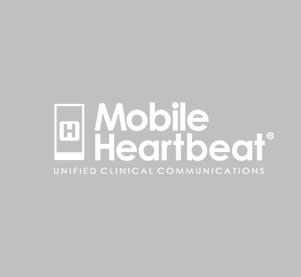When an organization starts to investigate clinical communications via smartphones, they are inevitably faced with questions around measuring impact. Return on Investment (ROI), workflow changes, improvements in patient care and even cultural impact all become part of the decision process. The scope and breadth of a mobility project can be overwhelming, so below is a guide to some of the measurement criteria and benefits (some obvious, others surprising) that you should include in your decision-making:
Workplace Impact – Workflow Changes
By definition, a mobility deployment via smartphones changes the workflow of your clinicians. A previous blog article highlighted the “15 minutes to 15 seconds” improvement for physicians. But other staff members experience tremendous impacts as well. Here are a few anecdotes:
- An RN refers to the smartphone and our software as “Having a resident in my pocket,” since the mobility technology keeps them connected at all times.
- Bed cleaners equipped with smartphones can now instantly send updates when a bed is ready for a new patient.
- Clinicians can now easily conduct impromptu consults with their cohorts via voice, text and video.
Workflow improvements begin immediately and keep growing as your clinicians find new ways to use their smartphones and mobility software.
Clinical Improvements
We are big proponents of measurable results and one of our client hospitals recently shared with us some outstanding clinical improvements. This particular hospital was looking to measure the clinical impact of their new Mobile Heartbeat deployment and they found the following as a direct result of deploying smartphones with our software:
- The time from a patient’s stroke event to a CT scan decreased by 9 minutes per patient due to improved communication and coordination.
- The average “time to treat” in the Emergency Department decreased by 6 minutes per patient.
Measuring both clinical impact and throughput resulted in impressive improvements.
Information Technology Impact
How busy is your hospital Help Desk? Make sure you measure your support calls before and after-a smartphone deployment. You will find that easy-to-use clinical communications software will reduce your clinicians’ dependence on complex Workstations on Wheels (WOWS). Their familiarity with smartphone software will result in fewer support calls and less user frustration.
Financial Impact
Increasing revenue or decreasing costs can create a positive financial impact, but what if your smartphone deployment can accomplish both?
- One hospital that deployed our Consumables Billing Module in their extensive Emergency Department is now capturing 5,500 consumable items per month and attributing these items to the appropriate patient’s billing record via the smartphone.
- Our clients’ HCAHP scores have increased immediately after their Mobile Heartbeat deployment. One facility went from missing their HCAHP goals to becoming the top ranked hospital in their entire chain.
- Critical lab results can be “pushed” to each patient’s care team. This means less “time to treat” (see the ED example above) and results in a leaner, more cost-effective hospital.
Measuring financial impact – both revenue and costs – is critical in your clinical communications decision.
Summary
With all of the above areas for measurement, where should I focus? Our advice is to start with the goals most important to your facility. You can add-on the other impact areas later. But one big piece of advice from experience: don’t try to boil the ocean by measuring everything. Just make sure that you get a baseline before you deploy a mobility solution and then compare this with your post-deployment data. We’re confident that you will see some excellent improvements.


